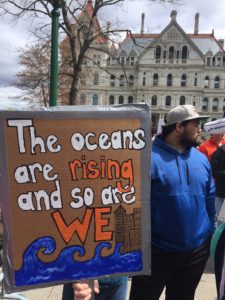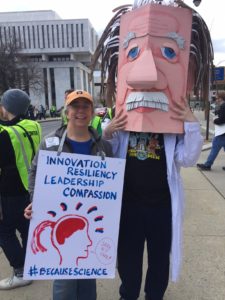
#becausescience
I took an on-line biomimicry course over the last few weeks via www.canvas.net (take a look and see what’s there for you). It was very interesting, a good refresher for me, got me outside in our strange-weather spring, and it forced me to re-engage in some critical study habits. I hope I continue to build on those rediscovered habits.
It also exposed me to perspectives of students from all over the world, with different levels of interest, career growth, and curiosity. I think nearly 600 took the course, though maybe one 1/3 of that number finished from what I saw of the final posted projects. The efforts were very cool, and the ideas generated from paying a little bit of attention to nature were inspiring.
But the explorations were not easy, nor even comfortable for some.
One student commented that she feels biomimicry is a sort of pseudo-science. Her concern is that if we don’t know what we are working toward, or it is not clear, and if the answers cannot be confirmed by established experts, then how is this science? My gut response is that this is precisely why it is science. Are we so comfortable and complacent in the world that we seem to absolutely control that we now think science consists solely of the answers already found? I think there are many, many people who feel this way, and that is perhaps why we are in constant foolish debate over scientific facts of the current era…if they are not facts that have serious yank in history then they cannot be true. Too many people think that science is already written.
Science is the pursuit of truth, with high expectations for errors and missteps, yet also a high level of attention to correcting and to building on the knowledge gained from those errors. It is only through failure that we find the truths. The ideas are formed, theories created and tested, the information summed, data reviewed by peers, usually competitors in the scientific community, and then, only then, published. And, quite frankly, once the work is published it is again tested and explored and reassessed. Science is a world of continual improvement, lack of ego, and respect for the collaborative nature of innovation. I believe true scientists, no matter their realm of science, understand they are all in this together and that the work, even when not directly collaborative, is truly interdependent. I know no one who thinks their discoveries came from the nothingness of “scratch”, and every scientist I know welcomes peer review and healthy, open challenges to the data, processes and results. And, when a solid 97% of the scientific community studying and working in the realm of climate science (for example) agree the work and projections are solid and usable, then it becomes the truth we can work with.
There is such an interesting yin-yang to this. Science seeks truth, yet is comfortable with the process of trial and error, clarity and messiness, two steps forward and one back. Many people think that a process that is accepting of “failure” is itself flawed, instead of realizing the strength and accuracy that comes from addressing issues in process and conclusion.
In addition, we want to trust science completely on one hand, but feel we cannot trust the intent of a new science because we don’t know where we are headed in the development of that pursuit, and want some oversight body to tell us we are on the right track. Biomimicry is what I would call a new science, as are all the biomimetic applications we are now engaging in, such as bio-remediation and biophilia in design. Because this science is not yet fully written, and likely may never be, we have the amazing opportunity of taking a profound truth, that we can learn from nature’s millions of years of discovery and application, and opening our minds to ideas and solutions we have never before explored. These arenas will be full of truth and of missteps that will still provide valuable information to us. It is a science because it is exploring to find the truths in Nature’s experiences. It is a science because it is unafraid of the messiness that may come in the process.
If the answers were all written down, this would be history, not science.
At the March for Science in Albany, Paul Tonko, our Representative in Congress, said that failure is an investment in success. I was thrilled to hear a participant in our current federal government say this radical thought out loud, to a crowd of nearly 4,000. Every person in that plaza and on that march knows the value of exploration and robust scientific process reaching toward the truth we may not even yet see on our horizon….
#becausescience
Keep being curious,
Jodi
1 Like this post (no login required)

